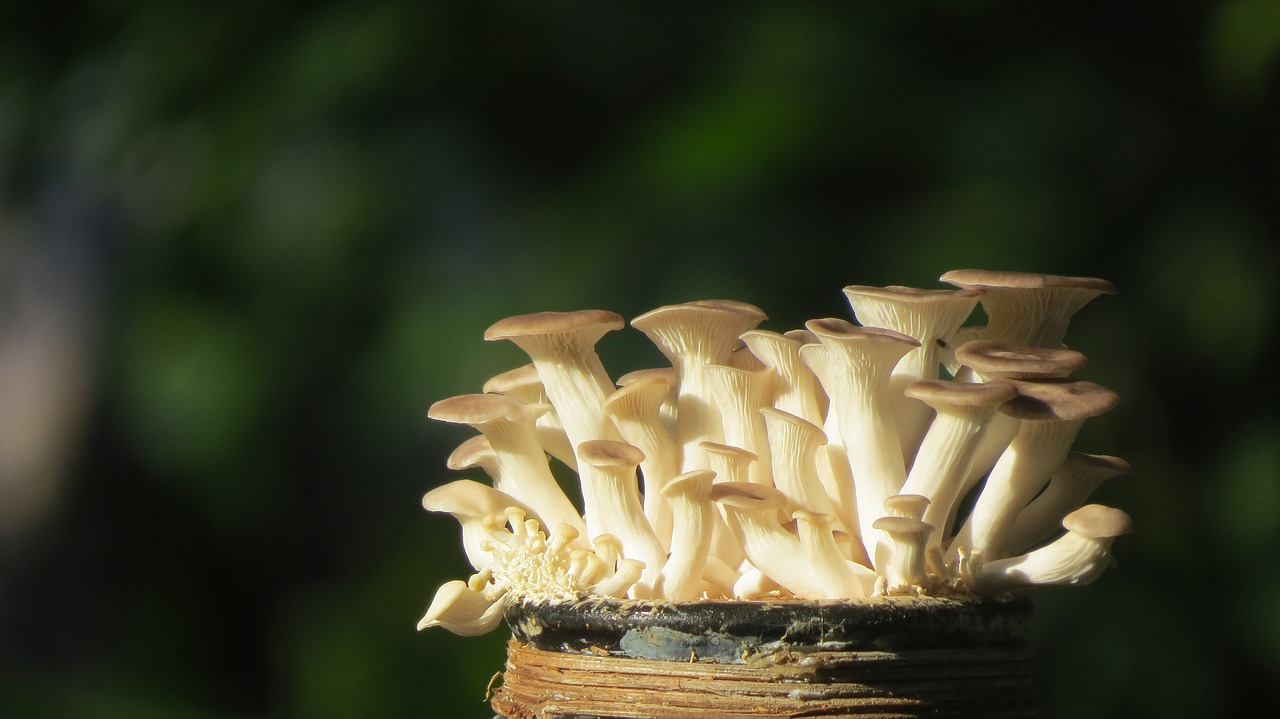Are you looking for a mushroom that can add flavor and texture to your favorite recipes? If so, then the blue oyster mushroom is an ideal choice! Harvested globally, this delectable edible fungus has been used in cooking and traditional medicine for centuries. They lend an umami-rich taste to dishes and are also brimming with essential nutrients like protein and B vitamins. Read on to learn more about how this distinctive fungus may benefit you nutritionally, and find creative ways to incorporate them into your diet!
What Is It?
The Blue Oyster Mushroom (Pleurotus ostreatus) is a species of gilled mushroom that grows in clusters on dead trees. Its distinctive blue-grey color and fan-like shape make it easily recognizable. It has a mild yet distinct flavor and is usually cooked, although some people enjoy eating it raw. They are often prepared in stir-fries, soups, stews, and portions of pasta. Blue oyster mushrooms can also be cooked with other ingredients, such as garlic and herbs, to create mouthwatering dishes.
GENERAL DESCRIPTION
Blue Oyster mushrooms have a relatively delicate texture compared to other mushrooms. They are small and quite thin with a fan or boat-shaped cap. The caps range from light blue to dark blue-grey, though some varieties may be slightly yellowish or white. Blue Oyster mushroom stems are typically short and thin, often not even reaching the length of their caps. Blue oyster mushrooms are quite common and are found in many parts of the world, including North America, Europe, and Asia.
NUTRITIONAL BENEFITS
Blue Oyster mushrooms boast an impressive nutrient profile! A single serving contains high amounts of protein and B vitamins and some dietary fiber, iron and zinc. Blue Oyster mushrooms also contain several phytonutrients, including polysaccharides, polyphenols, and antioxidants that are thought to have a wide array of health benefits. For example, they may help to reduce inflammation and support the immune system.
USES IN THE KITCHEN
Blue Oyster mushrooms are popular in the kitchen due to their mild flavor and delicate yet meaty texture. They can be cooked in various ways, including sautéing, grilling, baking, and frying. Blue Oyster mushrooms are also quite versatile, as they can be used in soups, stews, stir-fries, casseroles and even salads for a pop of color. Blue Oyster mushrooms can also be used as an alternative to meat in veggie burgers, tacos or sandwiches for a nutrient-rich meal!
Blue Oyster mushrooms are an excellent choice for adding flavor and nutrients to your favorite dishes. Blue Oyster mushrooms will surely become a pantry staple with their delicate texture and mild umami-rich taste!
NATURAL HABITAT
Blue Oyster mushrooms are found in many different habitats around the world. They typically grow on dead or decaying trees and other woody substrates, usually in clusters or “fans”. Blue Oyster mushrooms have a wide range of temperatures they can tolerate, preferring to grow in cool climates but also able to survive in warmer climates. Blue Oyster mushrooms can also be grown in various media, including sawdust, straw, and cardboard.
Blue Oyster mushrooms are ideal for cooks looking to add umami-rich flavor and texture to their dishes. With their impressive nutritional benefits and versatility in the kitchen, Blue Oyster mushrooms are sure to become a pantry staple! With some knowledge, Blue Oyster mushrooms can easily become a delicious and nutritious addition to your meal rotation.
DIFFICULTY OF CULTIVATION
Blue Oyster mushrooms are one of the easiest types of mushrooms to cultivate. They can be grown in several substrates, including sawdust, straw, cardboard, and coffee grounds! Blue Oyster mushrooms are relatively low-maintenance and only require basic supplies such as a growing bag or container, sterilized substrate, and spores or spawn. Blue Oyster mushrooms also grow quickly, often ready for harvest within 1-2 weeks! With a little effort, Blue Oyster mushrooms can easily be cultivated in the home or garden with success.
Blue Oyster mushrooms are an easy and rewarding choice for mushroom lovers looking to cultivate their food at home. With their mild flavor and delicate texture, Blue Oyster mushrooms will surely become a favorite in the kitchen!
SPAWN TYPES
Blue Oyster mushrooms come in various spawn types, including grains, sawdust and pellets. Grains are the most common Blue Oyster mushroom spawn type, with wide-grain varieties available. Sawdust and pellet Blue Oyster mushroom spawns are also available to expand their skills. Blue Oyster mushroom spawn is readily available online or in specialty stores, making it easy to get started on your Blue Oyster mushroom growing journey.
FRUITING CONTAINERS
Blue Oyster mushrooms can be grown in various containers, including bags and trays. Bags are the most common type of Blue Oyster mushroom fruiting container and are used to control moisture levels and produce larger yields. Trays are also used by Blue Oyster mushroom growers, as they offer more ventilation – which is essential for Blue Oyster mushroom growth. Blue Oyster mushroom fruiting containers can be purchased online or in specialty stores, making them easy to find and use!
WEAKNESSES
Blue Oyster mushrooms can be prone to contamination, particularly from molds and bacteria. Blue Oyster mushroom growers must take precautions to reduce the risk of contamination, such as sterilizing equipment before use and ensuring proper air circulation in fruiting containers. Blue Oyster mushrooms are also sensitive to temperature fluctuations and must be kept in a consistent environment to ensure successful growth.
COOKING
Blue Oyster mushrooms are highly versatile and can be used in various dishes. Blue Oyster mushrooms, from stir-fries to soups, add an umami flavor to any dish. Blue Oyster mushrooms can also be eaten raw or dried for a crunchy texture. Blue Oyster mushrooms can easily become a pantry staple with their mild yet umami-rich taste.
Blue Oyster mushrooms are ideal for cooks looking to add flavor and nutrition to their dishes. With their versatility in the kitchen and ease of cultivation, Blue Oyster mushrooms are sure to become a favorite! Why not give Blue Oyster mushrooms a try today?

